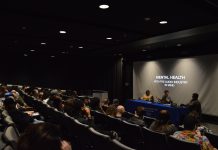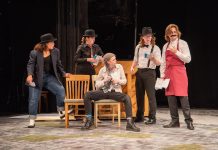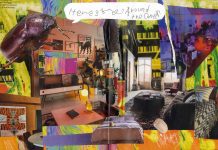


Jody Sowell, director of exhibitions at the Missouri History Museum, started his tour of the exhibit “Pulitzer Prize Photos” with a quote from photojournalist Eddie Adams.“If it makes you laugh, if it makes you cry, if it rips out your heart, that’s a good picture.”
The Missouri History Museum now features the biggest collection of Pulitzer Prize photographs in one exhibit.
On a tour from its home in Washington D.C., the display showcases prize-winning photographs since 1941.
The traveling exhibit is placed next to wide-spread images from the St. Louis Post-Dispatch. The Missouri History Museum features this exhibit until January 20th,
“These photos capture the absolute best of humanity, but they also capture the absolute worst,” Sowell said.
These prize-winning photographs encompass topics like sports, war, activism and childhood. The photos range from the Ferguson protests by David Cohen and Joe Rosenthal’s photo of American soldiers raising the flag on Iwo Jima.
The exhibit also features one of Sowell’s favorite photos, John H. White’s “Life in Chicago,” a photograph of two children laughing and skipping in the inner-city.
Sowell warned some of the images are hard to look at, like photojournalist Kevin Carter’s photo of a Sudanese girl with a vulture behind her. The image haunted Carter until he took his life a few months after he won a Pulitzer prize for the photo.
“A lot of the photos that are the hardest to look at are the ones that have the most impact,” Sowell said. “They shock people into action.”
Carter’s photograph sparked an “immediate public reaction” and was used for Sudanese relief efforts, photojournalist Greg Marinovich wrote in an autobiography. Marinovich traveled with Carter in South Africa.
Ben Boley of Washington D.C. stood in front of “Human Torch” by Greg Marinovich in horror. Marinovich’s photo depicted members of the African National Congress setting a man on fire. Boley has been across the country, visiting various museums with a tour group of other senior citizens like himself.
“It’s very interesting to have this much history in one place,” Boley said. “Museums are a stone’s throw away from each other in D.C., but this is the most interesting we’ve been to on this trip.”
The exhibit featured a wall where visitors could post answers to questions like, “How can photographs change feelings, opinions, conversations, and policies?”
One of the responses calls photojournalism “the windows to the real world around us.” Another answer said photographs “force you to face reality…maybe do something about it.”
“Words are just words but pictures tell a thousand truths,” Julie H.’s response said on the importance of photojournalists, “We need the truth they supply and provide.”



